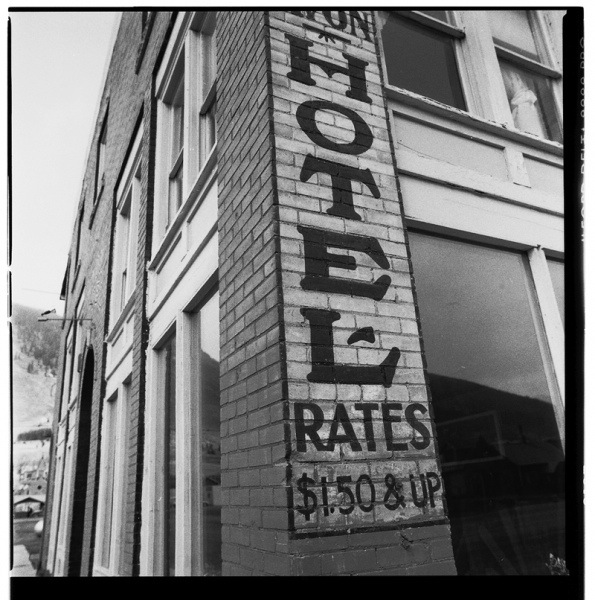
by tomnora | Jun 27, 2014 | startup CEO
In several negotiations I’ve participated in recently, I’ve seen an alarming set of trends – Hesitation, Uncertainty, lack of confidence. While this is quite understandable for many reasons (see below), it’s still not a good thing.
The ability to work quickly through a negotiation process is critical to the negotiation itself, as THINGS CHANGE over time. The definition of making a decision is making a decision, not thinking about it or hesitating.
All negotiations have some amount of hidden agendas to them, on both sides, so you’ll never know all of what your potential partner/employer/buyer/seller is thinking. That’s part of the fun. But stalling a negotiation, especially further down the process, will make you look suspicious, even possibly dishonest to the other side.
While once in a while drawing out the process makes good sense and is even the best strategy, in the long run it’s usually a bad move. When you dilly dally, wait it out, hesitate, delay, constantly change the terms, you send a message to the other side that you’re not that interested, not ready, willing to lose the transaction, want the terms to change or worse, don’t know what you’re doing. Either do it or don’t and move on. Or look like a weak negotiator.
Stalling a negotiation also eats up time, doubly, because it also increases the likelihood of your early conversations becoming obsolete. Completing a negotiation allows you to practice your craft, use the change in your business. Yes, I’ve made some bad decisions because I made them too quickly, but the good decisions highly out weigh them.
Tina Fey has a great way of saying it in her book. “When in doubt, say yes to everything, then work it out. It will completely change the mood of the room.”
So show your confidence and skills by completing your negotiations. It will bring you more success in the big leagues.
by tomnora | Mar 10, 2014 | AdTech, early stage, founder, Tom Nora
Let’s start with the Non-Tech – Here’s a small piece I just wrote on the subject of how to visit the Bay Area and not be totally focused on techno-nerd things:
You should also expand your horizons beyond the techy stuff. I’ve worked and lived in Silicon Valley off and on for over 30 years (really!) and always enjoy the escapes from my techno-binary lifestyle there.
In fact, if you’re not so one dimensional and career/money/technology focused, you’ll probably have a better chance of meeting the right people.
I’m not disagreeing with the other lists here, especially Scoble’s list is very good and you should do all those. But here are a few of my favorites…
NON-TECHY EXPERIENCES:
>> Go to downtown Los Gatos and walk Main Street and University Ave, it has a very non-techy feel to it. Then sit in the Los Gatos Coffee Roasting Company for a bit.
>> Sit in the Rodin Sculpture Garden on Stanford Campus.
>> Drive the hills between Silicon Valley and the coast, go to the Half Moon Bay for dinner on the pier.
>> Drive up Sand Hill Road, slowly, and take it all in. This is the origin of most of the biggest VC deals in history.
>> Hit some dive bars in SF, there are too many to even list. SF is becoming more techy, but there are still many places where you can forget you’re in the center of techdom.
>> Walk the Golden Gate bridge.
Since SV is so tech focused, it’s actually a pleasant surprise when you find non-tech things to do there. If you do some of the above, I guarantee your trip to Silicon Valley will be much better.
For the technical visit list, my favorite was assembled by Steve Blank…
A Visitors Guide to Silicon Valley | Steve Blank.

by tomnora | Feb 26, 2014 | AdTech, Angel Investor, Business Development, CEO Succession, early stage, founder, Hawaii, Launch, SaaS, Scalability, startup, startup CEO, Tom Nora, venture
Here are a few traits to try to emulate if you want to be a successful startup guru. Success may be financial, fulfillment of a life goal or even altruistic. Success will begin to create itself if your heart is in the right place…
Take a look at the 9 things below and send me feedback on your thoughts.
1… Genuineness, honesty.
2… Humble openness to feedback. When I returned to LA in 2011 after being away for many years, I was smacked in the face by the volume of young startups that were in their first stages; and many of them sought me out. After a bit I noticed a dangerous trait in many of them – a false confidence and no ability to hear constructive criticism. The attitude was “just give us funding” even though I could see several fatal flaws that they couldn’t.
Being closed to feedback in itself is a sign of bad health, a fatal flaw. You don’t take all advice given to you of course, but you listen to it, calibrate it, mix it in with everything else you know that they don’t. You also have to know whom to spend your time with, many of the wrong people will want to offer advice, mostly for the wrong reasons.
3… A set of doctrines. It’s almost corny to see in many companies; they’ve worked out an internal lexicon, code words, project names to make things more unique and understandable. It speeds up communication. It
4… Taking everything from 90% to 110%. This is one I often see in looking under the hood of successful startups. It’s like a beautiful restored car that has every detail perfected when you inspect it further. The wiring, the upholstry, the under carriage – all the little details that most never see. In startups there is a beauty when you see these little things. I can think of many startup companies
5… Belief in the Idea. Belief that you have something unique, that the world, or part of the world, really does need this new thing/method/service. This is a key factor in many of the successful kickstarter products.
6… The journey is the reward. The #1 request I get from would be entrepreneurs startups is ” how do you do it, what does it take to build a successful startup, what should I do differently? They want all of these answers in one sitting, over lunch, and then want to go off and pour them on top of their startup like syrup. Great questions, but it doesn’t work like that. My answer is this… Get up every morning, work very hard (see 3. 90 to 110) make the best decisions you can, cry a little bit, then do it again the next day. Do that for several months continuously. Enjoy the process with its imperfections, if nothing else you’ll create a rhythm for yourself and your team.
7…Self Confidence. This is the most important trait of all. Unyielding confidence, an authentic, real confidence that comes from deep down inside is what takes you through the bumps and setbacks. Think of a topic you know that you have down cold. Nobody can tell you you don’t know this.
Not false confidence, that will do the opposite and cause failure.
8… Location. Being located in the right ecosystem helps foster self confidence; you know it can be done there, there’s success in the ether, those ahead of you help you make things happen, critique you,
9… 5 Best Friends. You want 5 people in your business-sphere that you can go to, brainstorm with, respect, and drive your progress. They must be influential, cognizant, and you must reciprocate, pay it forward. Don’t compromise here. If you don’t have 5 then go find them.
Contact me at t@tomnora.com


